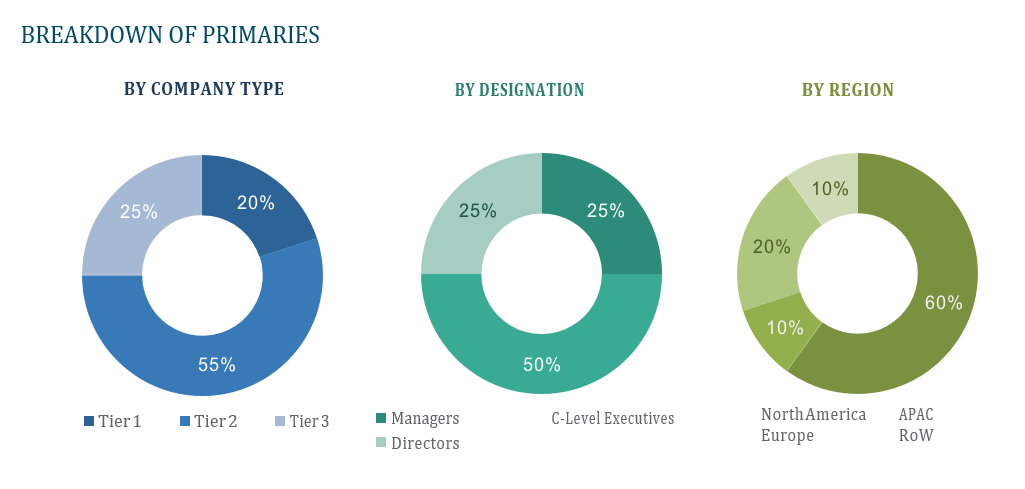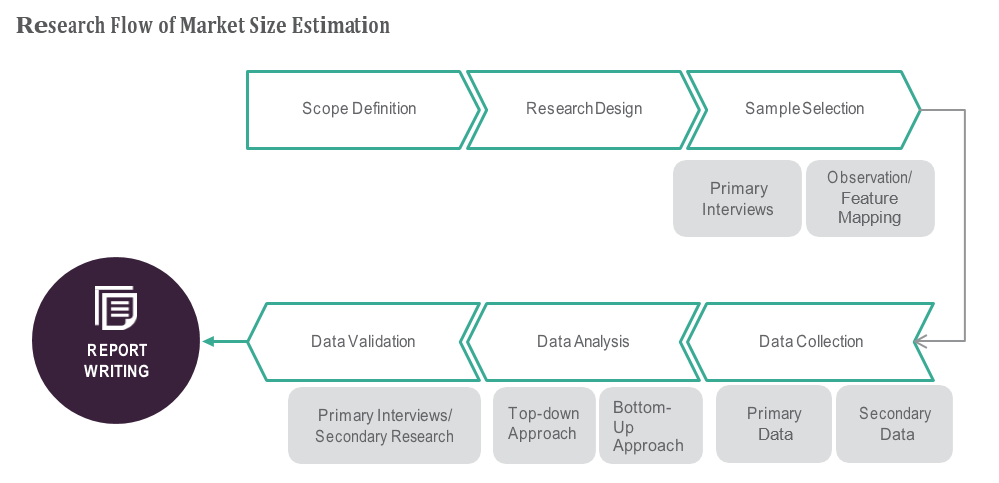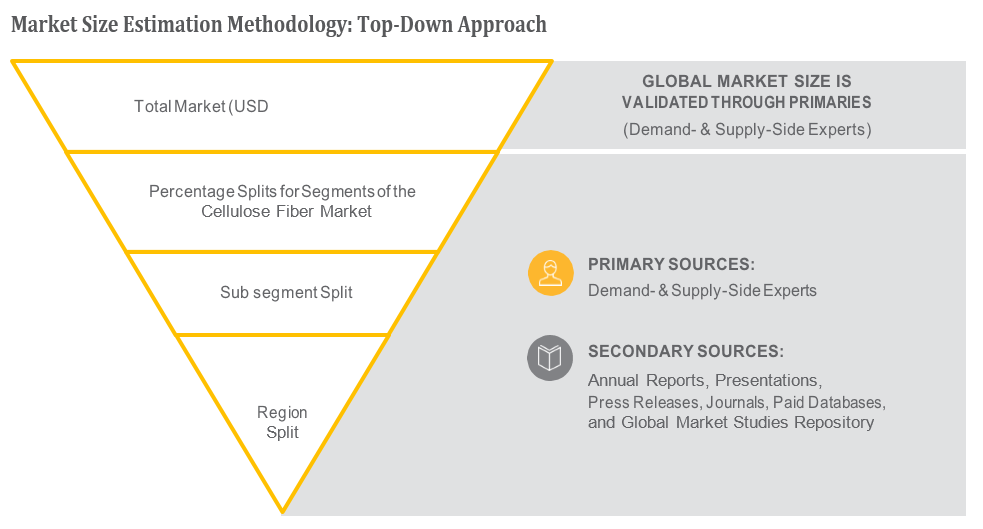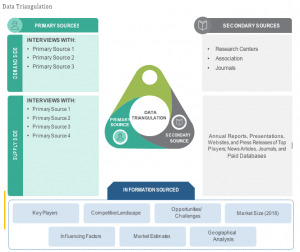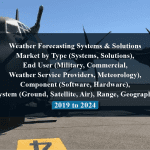OVERVIEW
The Weather Forecasting Services Market is currently valued at USD 1.9 billion in 2024 and will be growing at a CAGR of 8.2% over the forecast period to reach an estimated USD 2.8 billion in revenue in 2029. The weather forecasting services market is a dynamic industry encompassing a range of companies and technologies dedicated to predicting atmospheric conditions with increasing accuracy and granularity. This sector is driven by a growing demand for reliable weather information across various sectors, including agriculture, aviation, energy, and disaster management. Key players in the market utilize a combination of advanced meteorological instruments, satellite imagery, computational modeling, and data analytics to provide forecasts tailored to specific needs and geographic regions. As climate variability and extreme weather events become more prevalent, the market continues to evolve, with a focus on improving forecast lead times, precision, and the development of specialized solutions for emerging applications such as renewable energy optimization and urban planning.
Increasing globalization and interconnectedness across industries drive the need for reliable weather information to optimize operations and mitigate risks in sectors like agriculture, transportation, and logistics. Secondly, the escalating frequency and intensity of extreme weather events due to climate change heighten the demand for accurate forecasts to enhance preparedness and resilience. Additionally, technological advancements, including the proliferation of remote sensing technologies, high-performance computing, and big data analytics, enable more precise and timely predictions, fostering innovation and competitiveness within the market. Moreover, the expanding adoption of weather forecasting services in emerging applications such as renewable energy generation, urban planning, and insurance further stimulates market growth, driving companies to develop specialized solutions tailored to these evolving needs.
Table of Content
Market Dynamics
Drivers:
Increasing globalization and interconnectedness across industries drive the need for reliable weather information to optimize operations and mitigate risks in sectors like agriculture, transportation, and logistics. Secondly, the escalating frequency and intensity of extreme weather events due to climate change heighten the demand for accurate forecasts to enhance preparedness and resilience. Additionally, technological advancements, including the proliferation of remote sensing technologies, high-performance computing, and big data analytics, enable more precise and timely predictions, fostering innovation and competitiveness within the market. Moreover, the expanding adoption of weather forecasting services in emerging applications such as renewable energy generation, urban planning, and insurance further stimulates market growth, driving companies to develop specialized solutions tailored to these evolving needs.
Key Opportunities :
The weather forecasting services market presents several key opportunities for growth and innovation. Firstly, there is significant potential for expansion into new geographic regions, particularly in emerging economies where rapid urbanization and industrialization drive demand for weather-related insights to support sustainable development and infrastructure planning. Secondly, advancements in artificial intelligence and machine learning offer opportunities to enhance forecast accuracy and reliability through the integration of disparate data sources and the development of predictive models capable of capturing complex atmospheric dynamics. Additionally, the rise of the Internet of Things (IoT) opens avenues for the integration of weather data into smart city infrastructure, agriculture automation systems, and connected vehicles, creating new revenue streams and value-added services. Furthermore, the increasing emphasis on climate resilience and adaptation presents opportunities for weather forecasting providers to offer tailored solutions for climate risk assessment, helping businesses and governments better understand and mitigate the impacts of climate change.
Restraints :
One significant challenge is the complexity and uncertainty inherent in predicting weather patterns, particularly for extreme events and long-term climate trends. This unpredictability can undermine the confidence of users and stakeholders in forecast accuracy, impacting adoption rates and revenue generation for service providers. Additionally, the high costs associated with maintaining and upgrading sophisticated meteorological infrastructure, such as satellites, supercomputers, and data processing systems, pose a barrier to entry for new players and could limit market competition. Moreover, regulatory constraints and data access limitations in certain regions may hinder the free flow of weather information and the development of standardized forecasting solutions, restricting market growth and innovation. Furthermore, concerns regarding data privacy, security, and ethical considerations surrounding the use of personal or sensitive information in weather prediction algorithms could create compliance challenges and erode public trust in weather forecasting services.
Regional Information:
• In North America, the weather forecasting services market is characterized by a high level of technological sophistication and established infrastructure, driven by the demand for accurate predictions across diverse industries such as agriculture, transportation, and energy.
• In Europe, stringent regulatory standards and a focus on climate change mitigation fuel investments in advanced meteorological technologies and data analytics, with a growing emphasis on renewable energy integration and climate resilience planning.
• Asia-Pacific, on the other hand, experiences rapid urbanization and industrialization, leading to increased demand for weather insights to support infrastructure development and disaster risk management efforts.
• In Latin America and Africa, challenges related to limited access to reliable data, underdeveloped infrastructure, and socioeconomic disparities constrain market growth, although there is untapped potential for expansion through targeted investments in technology and capacity-building initiatives.
Recent Developments:
• In April 2023, The Weather Company :- The Weather Company is offering cloud-based services that will take map experiences to the next level by expanding high-resolution. It will provide new material and rendering techniques to create more detailed and exciting map views, especially in 3D.
• In June 2023, AccuWeather, Inc. : – AccuWeather, Inc. introduced the AccuWeather HeatWave Counter and Severity Index, a new heat index to help people better understand the severity, intensity, and duration of heat waves.
Key Market Players:
The Weather Company, AccuWeather, StormGeo, IBM Weather, DTN, MeteoGroup, The Weather Network, Earth Networks, Climacell, and WSI Corporation.
Frequently Asked Questions
1) What is the projected market value of the Weather Forecasting Services Market?
– The Weather Forecasting Services Market is expected to reach an estimated value of USD 2.8 billion in revenue by 2029.
2) What is the estimated CAGR of the Weather Forecasting Services Market over the 2024 to 2029 forecast period?
– The CAGR is estimated to be 8.2% for the Weather Forecasting Services Market over the 2024 to 2029.
3) Who are the key players in the Weather Forecasting Services Market?
– The Weather Company, AccuWeather, StormGeo, IBM Weather, DTN, MeteoGroup, The Weather Network, Earth Networks, Climacell, and WSI Corporation.
4) What are the drivers for the Weather Forecasting Services Market?
– Globalization and climate change increase the need for reliable weather information in sectors like agriculture, transportation, and logistics. Technological advancements like remote sensing and big data analytics enable more accurate predictions, fostering innovation and competitiveness. Emerging applications like renewable energy generation and urban planning further stimulate market growth.
5) What are the restraints and challenges in the Weather Forecasting Services Market?
– The weather forecasting services market faces challenges such as complexity, uncertainty, high costs, regulatory constraints, and concerns about data privacy, security, and ethical considerations. These factors can hinder adoption rates and revenue generation, hinder market competition, and create compliance challenges. Addressing these restraints requires collaboration among stakeholders, policymakers, and researchers to foster transparency, innovation, and resilience within the market ecosystem.
6) What are the key applications and offerings of the Weather Forecasting Services Market?
– Weather forecasting services find applications in agriculture for crop planning, in aviation for flight safety and route optimization, in energy for renewable resource management, and in disaster management for early warning systems and emergency response planning. These services also support sectors like transportation, construction, retail, and tourism by providing insights to mitigate weather-related risks and optimize operational efficiency.
7) Which region is expected to drive the market for the forecast period?
– North America is expected to have the highest market growth from 2024 to 2029
Why Choose Us?
Insights into Market Trends: Global Market Studies reports provide valuable insights into market trends, including market size, segmentation, growth drivers, and market dynamics. This information helps clients make strategic decisions, such as product development, market positioning, and marketing strategies.
Competitor Analysis: Our reports provide detailed information about competitors, including their market share, product offerings, pricing, and competitive strategies. This data can be used to inform competitive strategies and to identify opportunities for growth and expansion.
Industry Forecasts: Our reports provide industry forecasts, which will inform your business strategies, such as investment decisions, production planning, and workforce planning. These forecasts can help you to prepare for future trends and to take advantage of growth opportunities.
Access to Industry Experts: Our solutions include contributions from industry experts, including analysts, consultants, and subject matter experts. This access to expert insights can be valuable for you to understand the market.
Time and Cost Savings: Our team at Global Market Studies can save you time and reduce the cost of conducting market research by providing comprehensive and up-to-date information in a single report, avoiding the need for additional market research efforts.


